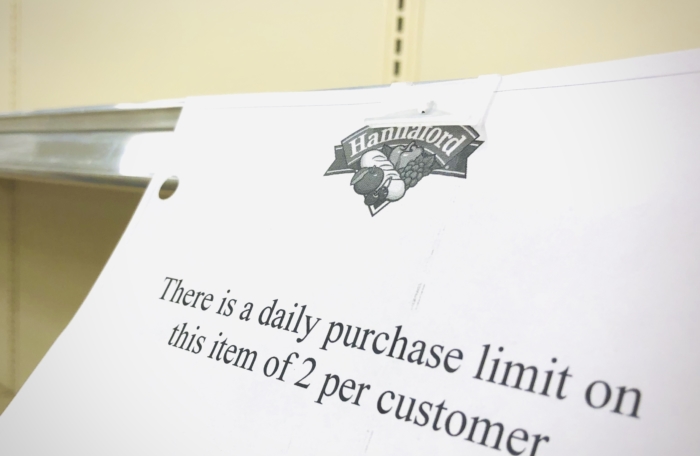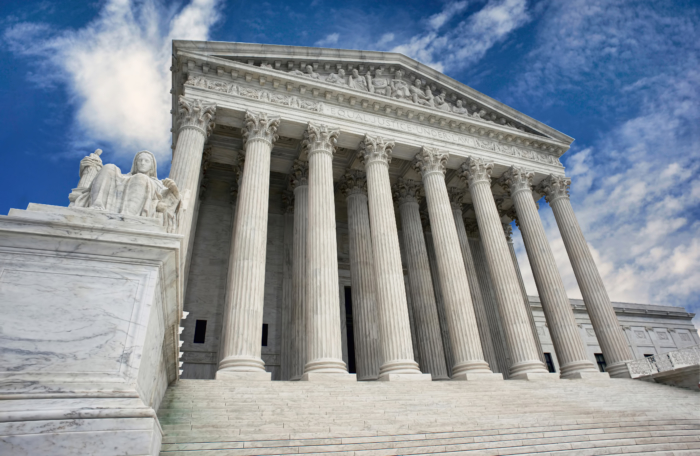By Andrew Cline
Ken Spilman usually spends early April preparing B’s Tacos for the season. This week, the food truck he’s owned for seven years sits idle as he waits out the coronavirus.
“We’re hunkered down and we’re not going to get out there until the curve starts to go down,” he said.
He’s already lost lucrative event contracts, he told the Josiah Bartlett Center.
“The cancellations are right across the board. We’ve lost a significant amount. I have contracts that have now been either canceled completely or rescheduled. Two weddings that were planned, early summer weddings, and they’ve decided to wait a year.”
In the rapid economic contraction following massive business closures last month, local regulations prevent Spilman and other food truck owners from improvising new ways to find clients.
“I can think of neighborhoods in Londonderry and Derry that if I announced I’m going to be at this location on Wednesday night for an hour, I’d do very well. It’d be a huge opportunity for us food trucks to go into certain neighborhoods. It’d be more local. I could serve my local community instead of going down to Massachusetts.”
But food trucks generally are not allowed in residential zones.
“Licenses or site vending permits shall not be granted for vending within any residential district,” states Londonderry’s vendor ordinance.
“You’d be surprised how many people have reached out to me and said, ‘why can’t you come to our neighborhood like an ice cream truck,’” Spilman said. “With social media today, you really could come to a neighborhood.”
Location restrictions keep food trucks out of large portions of commercial and industrial zones, too. Portsmouth restricts food trucks to private property and a public parking space downtown. Seven sidewalk spaces are reserved for food carts. The city bans food trucks from doing business on city streets, with the exception of exactly one downtown parking space this year. (The ordinance allows for three.) The parking space is auctioned to the highest bidder annually. By ordinance, the starting bid is $5,000.
State law requires food vendors to get a state license ($50), which allows them to operate everywhere in the state. They remain subject to local regulations. Fifteen New Hampshire municipalities regulate where, when and how food trucks can do business. Food truck operators say the local regulations are highly restrictive and the fees expensive.
This month, with Granite Staters ordered to stay home and non-essential businesses closed, ordinances prohibit food trucks from going where their customers are — homes, public parks and hospitals — and force them into deserted downtowns and big-box-store parking lots.
“They could be operating more freely,” Aaron Krycki, environmental health supervisor for the City of Manchester, said.
“Rules aren’t designed to tell you what you can do,” Krycki said. “They’re designed to tell you what you can’t do.”
But for food trucks, local regulations are so broad that they often amount to a short list of places vendors may operate.
Manchester reserves Stanton Plaza on Elm Street, in front of the DoubleTree hotel, for food truck vendors. It lets truck owners bid on spaces at eight city parks. Vendors must get written permission to use any other public property — and most private property as well.
The city’s regulations require vendors to obtain “written permission of the abutting landowner and/or tenant” to do business on private property, even their own.
In Manchester and many other municipalities, it is illegal to sell food from an on-street parking space even if your truck is fully licensed, inspected, fits in the space, and the meter is paid.
Cities typically prohibit food trucks from doing business on public streets even if not obstructing traffic. Some, like Manchester and Keene, make exceptions for “frozen confections” vendors (ice cream trucks).
There is not a single licensed mobile ice cream truck in Manchester, and there hasn’t been one in years, according to the city clerk’s office. So Manchester residents stuck at home during the state of emergency can’t even be cheered up by a visit from the ice cream man.
Keene generally prohibits mobile food vendors from doing business on public property, including roads and parking spaces, with a few center city exceptions.
“We do have some locations downtown on the sidewalk where we allow food carts to be. Five right now,” Assistant City Clerk Terri Hood said. “They go through clerk’s office to get permission to use the space. In addition to normal license, they have to have additional license agreement and small rental fee.”
The fee is $250 for a one-year permit, she said.
Ice cream trucks can roam most Keene neighborhoods (there’s a list of narrow streets they are not authorized to use). But food trucks cannot sell in any residential area unless invited to cater an event on private property.
Keene recently revised its parking ordinances so city officials could allow vending from parking spaces at their discretion. Vending is allowed in “parking spaces or parking lots as may be designated from time to time by the city….”
Among food vendors, Concord and Portsmouth have reputations for being prohibitively strict and expensive.
“I won’t go to Concord because of how expensive it is,” Spilman, owner of B’s Tacos, said.
Concord’s license costs $212. (Nashua charges $10 for a day, $25 for a week, or $100 for a year.)
Concord prohibits food vendors everywhere except in the central business district “at locations approved by the Licensing Officer.” By ordinance, “approved locations are limited to Eagle Square and to four (4) within the public way.”
That’s it for the city. Even for authorized spaces, vendors must get “the written approval of the landowner and tenant in front of whose property and business the applicant intends to operate and the written permission of the majority of the two (2) adjacent businesses located on both sides of the proposed location.”
With so many restaurants downtown, that likely means getting the permission of a restaurant owner, which is highly unlikely.
“In Concord, if you could set up in front of the State House, that would be great, but they’d never let you do that,” said Chris Kozlowski, the award-winning owner of Crescent City Kitchen, a mobile food trailer.
Some cities make the restaurant protectionism even more explicit. Manchester bans food trucks from doing business within 50 feet of a restaurant that sells a similar product. A truck that sells hot dogs, for example, can’t operate on the street near a restaurant that also sells hot dogs.
That provision is probably unconstitutional. In 1979, the Los Angeles Superior Court in People v. Ala Carte Catering Co. struck down just such a regulation as unconstitutional, calling it a “rather naked restraint of trade.”
In 2011, the Institute for Justice, a public-interest law firm, sued El Paso, Texas, over its ordinance prohibiting food trucks from operating within 1,000 feet of any restaurant, grocer or convenience store. Rather than face a trial, the city repealed the rule, acknowledging that it served no public health purpose.
The Los Angeles case helped food trucks to flourish there. The city is considered by many foodies to be the birthplace of gourmet food trucks. Its regulations are cited as a model for other municipalities because they are focused on health and safety and largely avoid anti-competitive restrictions.
Remarkably, New Hampshire municipalities have food truck regulations that can be more burdensome than those in New York City or L.A. Even when one city’s regulations are relatively easy to meet, the costs of complying with different rules in multiple places adds up.
“The hardest thing about New Hampshire is that it’s not state-based, it’s not county-based, it’s local rule,” Krycki, Manchester’s environmental health supervisor, said. “Every individual town can create a list of ordinances that can differ from one location to another.”
Kozlowski, who operates in New Hampshire, Maine and Massachusetts, estimated that he spent roughly $1,500 on government fees in New Hampshire alone last year.
“I have a wall full of licenses inside my trailer,” he said.
The paperwork can be duplicative too.
“The thing with the hawkers and peddlers that blows my mind is that you have to get a background check with the state, and then they want another for the permit, so it’s just a tax grab,” Kozlowski said.
Some municipal officials understand how burdensome the rules can be.
“I think the biggest issue that these food trucks face, and a lot of the complaints I get, is finding an area. That’s tough,” said Stacy Disabato with the Manchester City Clerk’s office.
Having fielded lots of queries about the lack of food trucks over the years, there is interest at City Hall in becoming more accommodating, she said.
“Anything we can do to bring business here, we’re really interested in learning.”
In Rochester last month, city officials invited four local food truck operators to set up in normally prohibited public spaces so they could keep their businesses alive.
“With the Covid-19 situation, their events and catering gigs had all dried up,” Rochester City Manager Blaine Cox said. “Two of our food trucks had semi-permanent locations. One was at the Home Depot and another was at the Harley Davidson dealership, and they were closed.
“They were basically shut out. And at the same time, with the governor’s order, we had quite a number of fixed-base restaurants that shut down. They didn’t bother to go to takeout, they just shut down.
“We reached out to our food truck operators and said, we know your business is drying up. If you’d like to come downtown, we have space for you.”
The idea was to keep the city’s four registered food trucks in business. With one of the newer operators, it worked, Cox said.
“One of our food truck operators said, If you guys haven’t done this for us, we wouldn’t survive.”
Food truck operators say the burden of so many costly and varied local regulations makes it hard to work in New Hampshire.
“It seems to me that other states have their ducks in a row,” Spilman said.
If municipalities do not begin lifting onerous restrictions, state legislation is possible.
Earlier this year, Kozlowski and other food truck operators went to Concord to petition legislators to adopt uniform, statewide regulations. They say they would rather have one set of state rules and a single fee than 15 different local ordinances and thousands of dollars in fees.
Other states have already acted.
After fielding similar complaints for years, Arizona legislators in 2018 passed a statewide food truck licensing bill that limited local regulatory authority. That same year, Rhode Island adopted a similar law that exempts food trucks from local hawkers and peddlers licensing.
If municipalities want to avoid a statewide law that overrides their own ordinances, Los Angeles and some other California cities offer useful models. Food trucks flourished in L.A. after the city repealed regulations that restrained trade. Cities such as Fresno wrote regulations that achieved public safety goals without being overly restrictive.
A 2012 Institute for Justice report, Food Truck Freedom, offers a list of suggested policies that would remove needless barriers while maintaining health and safety standards. The following suggestions are put together from recommendations made by food truck operators and the IJ report.
To make immediate changes, leaders in municipalities that have declared a state of emergency might be able to relax rules temporarily during the state of emergency. This short-term measure could let food truck owners serve immediate local needs and relieve them from the burden of complying with regulations that sequester them to now-vacant downtowns.
- Lower hawker and peddler fees. These fees should exist only to cover nominal paperwork costs, not to raise revenue or discourage applications. Fees that range into the hundreds of dollars are clearly unreasonable burdens that have no relation to actual application costs.
- Remove “abutter approval” language that gives neighbors a veto over a food truck’s location. These rules have no relationship to public health or safety and are merely a restraint on doing business.
- Remove any language that restricts food truck operation within a certain distance of a restaurant. These restrictions are likely unconstitutional and should be removed immediately. In any case, they harm consumers by giving established businesses a veto over potential competitors. They also hurt other local businesses by keeping popular food trucks, and the customers who seek them out, away.
- Allow food vendors to operate on public streets and sidewalks as long as they do not obstruct traffic. Instead of creating specific set-back distances, Fresno, Calif., simply requires that vendors not “obstruct the free movement of pedestrians or vehicles on any sidewalk.”
- Allow food trucks to do business in any metered parking space for the duration of the meter. This will free vendors to find the spots most convenient for customers while preventing them from taking a space all day.
- Allow food trucks to operate on residential streets. These prohibitions sometimes are handled by zoning departments, which treat food trucks as if they are opening a permanent store in a neighborhood. They are not. Food trucks can take orders by apps or online, just as take-out restaurants do, and deliver directly to customers’ homes. They also can use apps and social media to respond to customers’ location requests. Instead of cruising streets like an ice cream truck, some food trucks can stop and vend for a few minutes or a few hours in neighborhoods at the request of residents.This would be an especially valuable service during a stay-home order.
- Allow food trucks to operate on more public property, particularly in parks and parking lots. Though many municipal ordinances limit food trucks to a few public locations, city officials often retain the authority to open other spaces at their discretion. The result is a random, unpredictable, and changing list of extremely limited available spaces. Food truck vendor locations should not be subject to the whims of municipal employees. A better policy would be to open parks and off-hours parking lots as a rule. Scarce space, such as near public swimming pools in the summer, can be put out to bid. Manchester auctions food truck spaces at eight city parks.
- Let vendors compete. Manchester prohibits two trucks of the same type from being at the same park. Because there are so few vendors (only eight food trucks bid for eight park spaces in 2019), it hasn’t been an issue recently. But in more popular parks it could hurt consumers once food truck business expands. Vendors often respond to trends (cupcakes, for example). A city might have multiple grilled cheese trucks but no burger truck one year, then four hot dog trucks the next year. There’s no public harm in having two taco trucks at the same park. Limiting options, though, could keep prices higher and reduce consumer choices.
Andrew Cline is president of the Josiah Bartlett Center for Public Policy.
Download a pdf copy of this report here: JBC Food Truck Regulations.











